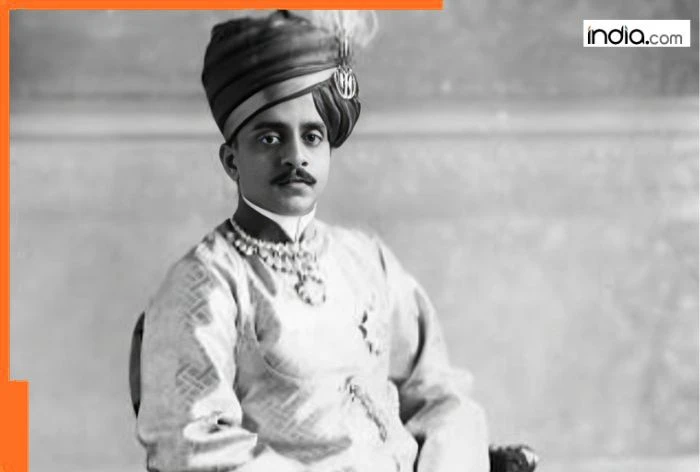There have been scores of uber-wealthy kings and queens in India’s recent past who became famous across the globe because of their massive fortune, lavish lifestyles, opulent palaces filled to the brim with gold, diamonds and other rare jewels, and their fleet of Rolls-Royce cars.
However, one name is often forgotten when looking at erstwhile Indian royalty, Maharaja Krishnaraja Wadiyar IV, an Indian ruler who was once the among the richest individuals on the planet, but is overlooked perhaps because unlike his peers, he used his wealth for social reforms instead of living an opulent lifestyle.
Who was Maharaja Krishnaraja Wadiyar IV?
Maharaja Krishnaraja Wadiyar IV, the son of Maharaja Chamarajendra Wadiyar X and Maharani Vani Vilas Sannidhana, was born on June 4, 1884, in the grand Mysore Palace, and ascended the royal throne at the tender age of 11 after the sudden demise of his father. His mother acted as the Queen Regent till Krishnaraja turned 18 in 1902.
Growing up, Krishnaraja Wadiyar IV had an interesting education which had a mix of Western and Indian influences, covering English, Kannada, Sanskrit, and fine arts. His multicultural and reformist outlook shone through at an early age, with Lord Curzon, the then Governor-General of India predicting that Mysore would likely witness a golden age, with great strides in development under the young king’s leadership, a prophecy which would later come true.
How Wadiyar IV developed Mysore and worked for social upliftment?
After taking the reins of the Mysore empire, Maharaja Krishnaraja Wadiyar IV began transforming transforming society and the upliftment of downtrodden classes. The young king banned age-old practices like untouchability and child marriage for girls under the age of 8. He also introduced scholarships for widows and allocated Rs 60 lakh annually, a huge sum at the time, from his personal coffers, to support disabled children.
In 1915, Wadiyar IV established the Mysore Social Progress Association for the upliftment of underprivileged classes, and in 1918, invited Sir Lesley Miller to assess the conditions of backward classes, leading to a 25% reservation in government jobs for non-Brahmins, a policy which is was way ahead of its time.
Beyond social reforms, Krishnaraja Wadiyar IV also worked for developing Mysore as a technological powerhouse, and soon the princely state became the first in Asia to generate hydroelectric power. The reformer king’s efforts bore fruit when Bangalore (now Bengaluru) became the first full electrified city in Asia, earning him the moniker “Krishnaraja Bhoopa, Mane Mane Deepa (the king who lit up every home).
What reforms did Krishnaraja Wadiyar IV introduce to promote education?
Additionally, Krishnaraja Wadiyar IV was a forward-thinking ruler who realized the value of good education and introduced several reforms, like making primary education compulsory to promote knowledge and learning. Under his rule, the education budget of Mysore had increased from Rs 6.9 lakh to Rs 46.8 lakh, with over 515,000 students enrolled in 8,000 schools in the princely state.
Wadiyar also founded institutions that thrive to this day, including Mysore Sanskrit College, and also gifted 10 acres of land to Nobel Laureate Sir CV Raman for his research institute. He also donated 400 acres near Malleshwaram to industrialist Jamsetji Tata for establishing what is now known as the Indian Institute of Science (IISc).
Maharaja Krishnaraja Wadiyar IV net worth
Maharaja Krishnaraja Wadiyar IV was once among the richest men in the world, boasting a net worth of $400 million, which is equivalent to around $7 billion (about Rs 57901 crore), when adjusted for inflation, according to reports. Notably, in 1937, TIME magazine had crowned the Osman Ali Khan, the Nizam of Hyderabad as the wealthiest on the planet with an estimated net worth of $236 billion (Rs 19 lakh crore)
